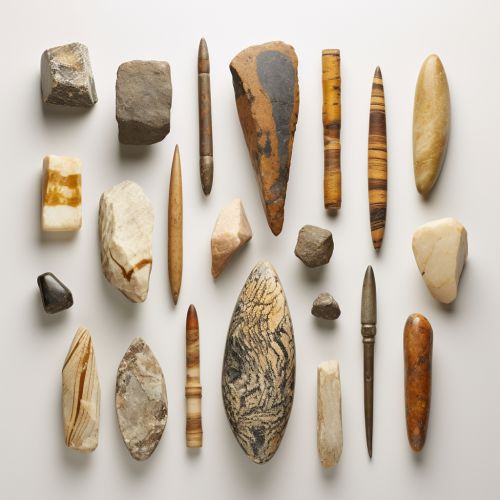Lithic Analysis
Introduction
Lithic analysis is the scientific examination of stone tools and other chipped stone artifacts using the methods of archaeology. This discipline, also known as lithic technology, is a subfield of anthropological archaeology and is concerned with the study of the technological processes used to produce tools from raw materials such as flint, obsidian, and quartz.


History of Lithic Analysis
The study of lithic analysis has its roots in the 19th century, when archaeologists first began to recognize the significance of stone tools in understanding prehistoric cultures. The development of the discipline has been influenced by advancements in other fields such as geology, anthropology, and ethnography.
Methodology
The methodology of lithic analysis involves several stages, including artifact collection, classification, technological analysis, use-wear analysis, and interpretation. Each stage requires a high level of expertise and understanding of the physical properties of stone, as well as the cultural context in which the artifacts were used.
Artifact Collection
The first stage of lithic analysis is the collection of artifacts. This process involves the careful excavation and recording of stone tools from archaeological sites. The location, position, and association of each artifact with other finds are meticulously documented to provide context for further analysis.
Classification
Once the artifacts have been collected, they are classified based on their morphological characteristics. This involves the identification of tool types, such as scrapers, knives, or projectile points, based on their shape, size, and the method of their production.
Technological Analysis
The technological analysis of stone tools involves the examination of the techniques and strategies used to produce the artifacts. This includes the study of flaking techniques, the selection of raw materials, and the sequence of production steps.
Use-Wear Analysis
Use-wear analysis involves the microscopic examination of the wear patterns on the working edges of stone tools. This can provide information about the function of the tool, the type of material it was used on, and the motion used in its operation.
Interpretation
The final stage of lithic analysis is the interpretation of the data gathered in the previous stages. This involves the integration of the technological, use-wear, and contextual information to draw conclusions about the behavior of the people who made and used the tools.
Applications of Lithic Analysis
Lithic analysis is used in a variety of archaeological and anthropological research contexts. It can provide insights into the technological capabilities of prehistoric societies, their subsistence strategies, and their social and economic organization. It can also be used to study the spread of technological innovations and the interactions between different cultural groups.
Challenges and Criticisms
Like any scientific discipline, lithic analysis has its challenges and criticisms. These include the subjective nature of artifact classification, the difficulties in inferring behavior from material remains, and the limitations of the archaeological record. Despite these challenges, lithic analysis remains a crucial tool in the study of prehistoric cultures.
